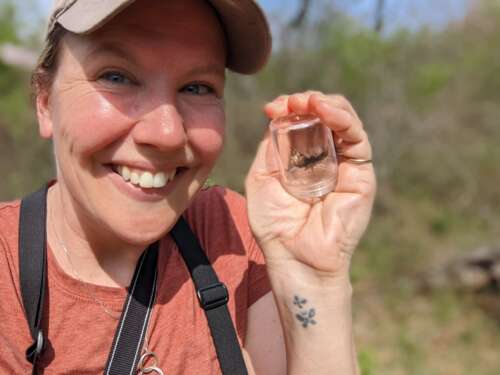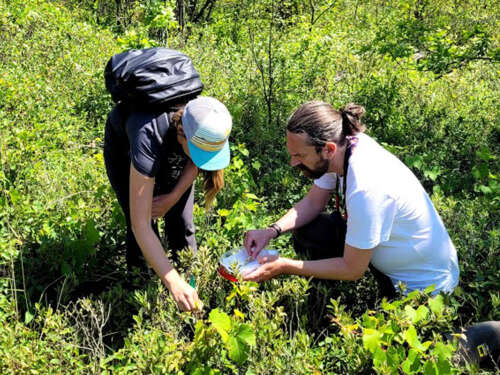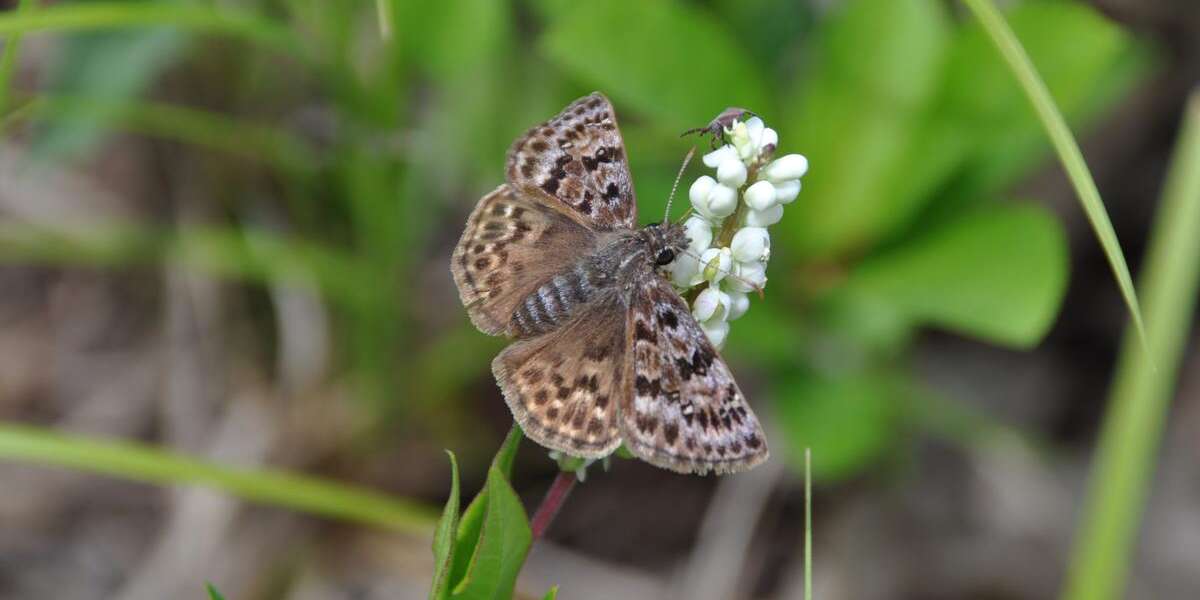
A University of Guelph project to revive an endangered butterfly species has made a big, fluttery leap forward.
Integrative biology professor Dr. Ryan Norris says nine mottled duskywings were spotted in Pinery Provincial Park on Lake Huron this past week, the first time the butterflies have been seen in the southwestern Ontario preserve in 30 years.
The sighting means that at least some of the butterflies that Norris and a team of collaborators reintroduced to the park last year have successfully overwintered.
“This is a really exciting milestone in our work,” said Norris, a professor in the College of Biological Science. “No one has ever successfully reintroduced a butterfly species in Ontario, so to see these individuals survive their first winter is fantastic.”
This first success in the project was featured in The Globe and Mail.
Norris headed to the site last weekend after receiving a report on the iNaturalist app that a visitor to the park had spotted one of the 700 duskywings introduced by members of the Ontario Butterfly Species at Risk Recovery team last winter.
It wasn’t long before Norris and colleague Jessica Linton, senior biologist with Natural Resource Solutions Inc., found three of the brown- and grey-speckled butterflies.
“This is exactly what we hoped to see this spring,” said Linton. “When we released adult butterflies last year along with pupae and larvae, we watched adults laying eggs, which was a big step. Now, with the discovery of these overwintered butterflies, we have taken another big step forward.”

It’s still too early to call the program a success; a fully sustainable population of the butterflies would be needed for that. But Norris said the team is encouraged they are on the right track.
“This has been our first try at a butterfly reintroduction,” he said. “It’s been a collaborative effort between many organizations and one we believe is working.”
Once widespread across many parts of central Canada, mottled duskywings have nearly disappeared from Ontario. Like many other species, the butterfly’s number have plummeted in recent decades due to human development that has stolen their habitat. In 2012, the butterflies were declared endangered in Canada.
The duskywing is particular about its habitat and will deposit eggs on only two plants: the New Jersey tea plant and the closely related prairie redroot. Both grow in what are now rare habitats that mottled duskywing depend on: open oak savannahs, tallgrass prairie and alvars.
The Pinery has spent many years working to restore these habitats to the park, which allowed the butterfly recovery team to launch the five-year duskywing recovery project, supported by a Natural Sciences and Engineering Research Council Alliance grant.

“The Cambridge Butterfly Conservatory in Cambridge, Ont., has been crucial to this,” said Norris “We didn’t know how to rear mottled duskywings but the team there was able to develop a captive rearing program that allowed us to bring 700 of them to the park last summer.”
With Wildlife Preservation Canada, the team will now begin a count of the butterflies to estimate the number that survived, track their activities over the summer and add more insects reared at the Cambridge conservatory to boost the numbers.
If all goes well, a similar reintroduction plan will be started on land owned by the Nature Conservancy of Canada — another partner on the project — in Norfolk County that has recently been restored from agricultural use.
“If we can recreate a habitat and return this butterfly species there, it would be another symbolic step that we can restore ecosystems,” said Norris. “And that would be a big achievement. It gives us hope that we can reintroduce what we’ve lost.”
Contact:
Dr. Ryan Norris
rnorris@uoguelph.ca
